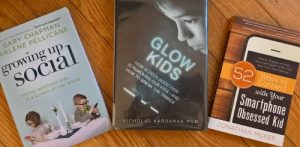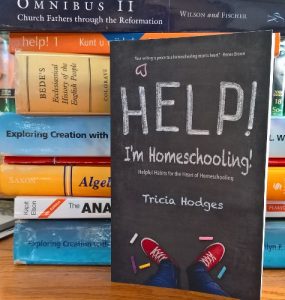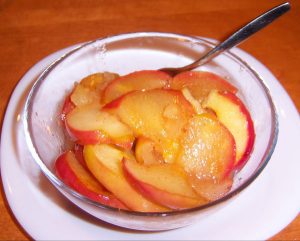We parents worry a bit about what screens may be doing to our kids but our worries are mostly about inappropriate videos, internet predators, and similar dangers and there are internet safety devices to take care of that. As for the rest, most kids have screens at a young age and all teens are glued to their phones so it must be fine. Right?
Wrong. One clue to this is that upper level tech creators often give their kids very little access to screens. So what is it that these tech creators know that the rest of us don’t seem to get?
It’s this: Most video games, social media, and online entertainment are deliberately designed to be highly addictive. They can damage the developing brain and are implicated in mental health problems.
In fact, Nicholas Kardaras, a psychiatrist who works with kids and teens and specializes in addictions, writes, “Like it or not, the reality is that in our glowing screen culture, we have essentially been giving our most innocent and most vulnerable an addicting and mind-altering electronic drug.” (34) Others echo his concerns.
Kardaras wrote Glow Kids: How Screen Addiction is Hijacking our Kids—And How to Break the Trance to alert parents and educators to this growing problem. He begins by relating his first discoveries of the horrific effects screens can have on vulnerable kids. It all came to a head when a young teen showed up in his office with gaming-induced psychosis. It took a month in a hospital psych unit to reconnect him with reality! In his book Kardaras explains how all kids are hurt by early and excessive screen use, even though few break down completely.
If you are tempted to scoff at these ideas, consider this. The US military is studying the use of video games in pain management and has found that, for those with the most severe pain, video games are more helpful in burn pain management than morphine. This seems to be due to changes in neurotransmitter levels as a result of immersion in the game. Now, if the chemistry of veterans’ brains can be altered by video games, then certainly we need to consider what happens to the developing brains of kids who use them.
First of all, Karadaras discusses addiction, defining it simply as pursuing something compulsively and self-destructively. Then he outlines risk factors for addiction. It seems that our brains crave novelty, reward, and connection with other people. Youth who are socially or culturally isolated, do not have a strong purpose in life, want to escape, or are under excessive stress, are more likely to find relief and meaning in screen-based lives, potentially leading to addiction. It is important to realize that screen-based connection, such as social media, does not fulfill our need for human connection and can actually worsen loneliness and lead to mental illness.
Child and teen mental illness has increased dramatically in the past short while, leading some experienced psychiatrists to wonder whether or not screens, whose use has increased dramatically over the same time, may be involved. It turns out that 90% of students with attentional, behavioral, emotional, or developmental problems also have a problematic relationship with screens. (119)
This relationship between screens and mental health is partly due to what has been called Electronic Screen Syndrome. It turns out that “…the unnaturally stimulating nature of an electronic screen, regardless of its content, wreaks havoc on the still-developing nervous system and mental health of a child on a variety of levels—cognitive, behavioral and emotional.” (116, italics added) Electronic Screen Syndrome is “a disorder of regulation; that is an inability in children to modulate their moods, attention or level of arousal in an appropriate or healthy manner.” It seems that screen use, regardless of its content, leads to both dysregulation and disorganization of the various biological and hormonal systems that can lead to or worsen “disorders such as ADHD, oppositional defiant disorder, sleep disorders, mood disorders such like depression and bipolar disorder, or behavioral issues like aggression—even kids with autism.” (115)
Before prescribing medication for such conditions, it is helpful nowadays to instead prescribe a complete tech fast or digital detox to assess the role screens may have been playing and to help children and youth reset and down shift their overaroused nervous systems. (117) Amazingly, such tech fasts have been effective 80% of the time, typically reducing psychiatric symptoms by at least half and even causing complete resolution of symptoms in cases where there did not appear to be an underlying psychiatric condition. (117) This approach also keeps children from unnecessary psychiatric medications which can so easily lead to an unstoppable cycle of medication and suffering, as discussed in Robert Whitaker’s chilling Anatomy of an Epidemic: Magic Bullets, Psychiatric Drugs, and the Astonishing Rise of Mental Illness in America.
Kardaras describes two ways tech fasts or digital detoxes are done (120-122, 238-239), recommending that the cold-turkey approach not be used since it can be both dangerous and traumatic, and emphasizing that screen time needs to be replaced with wholesome activities and interactions.
Glow Kids includes detailed discussions of video games, social media, violence, internet predators, educational uses of screens and more, always returning to the central theme that screens, both by their very nature and because of what is on them, harm the mental health of our children and teens.
What Can Parents Do?
Basic strategies from various sources, including Glow Kids:
- Show the child or teen the research about negative clinical and neurological effects of excessive screen exposure.
- Limit total screen time to one to two hours a day for ages 6-12 and set limits for teens as well.
- Substitute screen time with family time. Doing screen-free activities together, such as in 52 Ways to Connect with your Smartphone Obsessed Kid (note: all links are to my reviews or articles) by Jonathan McKee, will go a long way to reducing tendencies to addiction.
- For teens, I would suggest adding outside commitments such as part time jobs, volunteering, or sports.
- Encourage social interaction with family and friends. Growing up Social by Chapman and Pellicane discusses the effects of screens on socialization, with advice for parents.
- Require physical activity of some sort in exchange for the same amount of screen time.
- If your children need a phone to be able to keep in touch, get them a flip phone instead of a smart phone.
- Distinguish between using the internet and screens as tools versus using them as toys. Using them as tools includes surfing to research a topic, email, computer programming, creating music, writing, editing photos, following sports, or watching educational YouTube videos. These tend not to be addictive and can contribute positively to a teen’s life. Using screens as toys is often addictive and/or destructive, and includes mindless Youtube surfing, video games, hyper-texting, hyper-social media, gambling, porn, and chatrooms, and these should, obviously, be either minimized, or, in the case of some, avoided entirely.
- Most obvious and important of all, set a few basic rules for everyone in the family:
- limit screen time,
- do not allow screens to interfere with schoolwork, other necessary activities, and relationships,
- put screens away an hour before bed, and
- do not allow screens during the night.
Boredom without Screens
But, object most kids and many parents, that will lead to boredom. Kardaras’s response reminds me a bit of Anthony Esolen’s brilliant book Ten Ways to Destroy the Imagination of your Child and of the Harris’s concept of delight-directed learning. They all suggest that it’s good for kids to be bored and to have to figure out, on their own, what to do. “This is when creativity occurs, and your kids can find their talents,” Kardaras says. (247) How to be a High School Superstar Without Burning Out by Cal Newport helps teens and their parents understand how this process can work for older kids.
How can we determine if our children or teens are at risk for tech or screen addiction?
As we parents navigate the path of guiding our kids’ screen use, here are some questions to consider, selected from a list in the appendix of Glow Kids (note that these questions apply to teens as well, and also to us parents):
- Is your child staying up later and later to stay on the computer?
- Does your child get fidgety, anxious, and/or angry if they don’t have their device?
- Is their tech use negatively impacting their schoolwork, family life, or other activities or interests?
- Is your child hiding their screen usage or hiding their devices from you?
- Is your child dreaming of virtual imagery?
- Does your child seem apathetic or bored more easily?
Dr. Kardaras says that any or all of these (or any of the other ones on his complete list) could be a red flag for tech or screen addiction. If you are concerned and the above strategies make no difference, it would be wise to read about digital detoxing in Glow Kids and to see a professional who has experience with screen addiction.
We live in a ‘brave new world’ and need to learn to protect our kids, mentally, physically, and spiritually, from the negative aspects of technological developments while also taking advantage of their positive aspects. Discerning how to do this can be overwhelming but Glow Kids and the other resources listed below will help.
Reviews and Articles Related to Screens, Kids’ Mental Health, and What Parents Can Do:
“Glow Kids, Screens, and Education.” It turns out that screens may cause more educational problems than we suspected.
52 Ways to Connect with your Smartphone Obsessed Kid by Jonathan McKee. Practical ways to connect or reconnect.
Growing Up Social: Raising Relational Kids in a Screen-Driven World by Gary Chapman and Arlene Pellicane. “Is it possible for children to learn about relationships and responsibilities when the vast majority of their time is spent absorbed in a screen?”
Ten Ways to Destroy the Imagination of your Child by Anthony Esolen is not specifically about screen use, but many of its key ideas are very relevant.
“Delight-Directed Learning Pitfalls.” The joys and some common pitfalls of encouraging kids to pursue their own (screen-free) interests.
How to be a High School Superstar Without Burning Out by Cal Newport includes step by step guidance for how to harness free time and develop interests.
—
Note: The links above are to my reviews or articles; there are no affiliate links.
If you enjoyed this review, you might want to follow me on Google+, where I often mention helpful or interesting ideas, friend me on Facebook where I occasionally show up, or connect with me on GoodReads where I eventually share what I read.
Disclosure: I borrowed this book from the library on the recommendation of a pediatric concussion specialist (statistically, phone use and kids’ susceptibility to serious concussions have increased at the same time) and have given my own honest opinions.
This article may be linked to Saturday Reviews, Booknificent Thursdays, 52 Books in 52 Weeks Challenge, Literacy Musings Monday, and The Book Nook as well as to Inspire Me Monday, Raising Homemakers, Friendship Friday, Make My Saturday Sweet.






